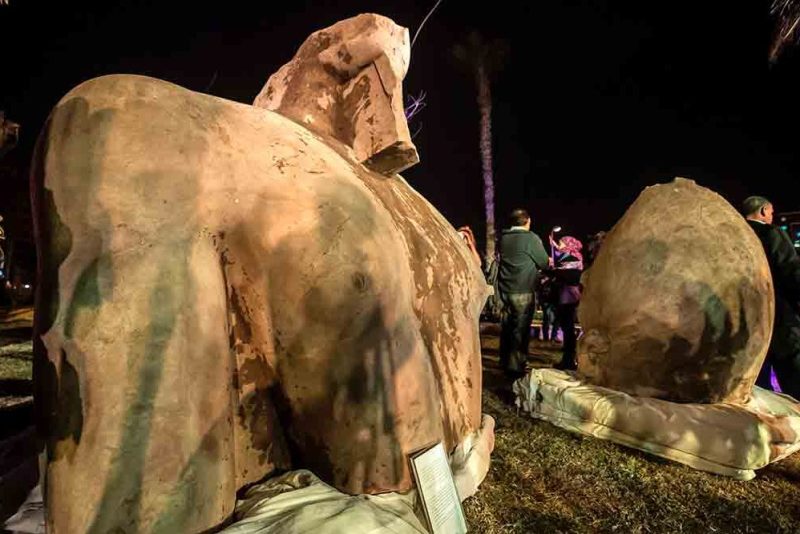
A landmark archaeological discovery is seemingly made every other week in Egypt these days. And the latest one doesn’t disappoint. Last week, a 26-foot-tall colossus statue was discovered by German and Egpytian archaeologists in a Cairo slum submerged under groundwater. It’s now been confirmed that it depicts the ancient Egyptian ruler Psamtek I (664–610 B.C.E.).
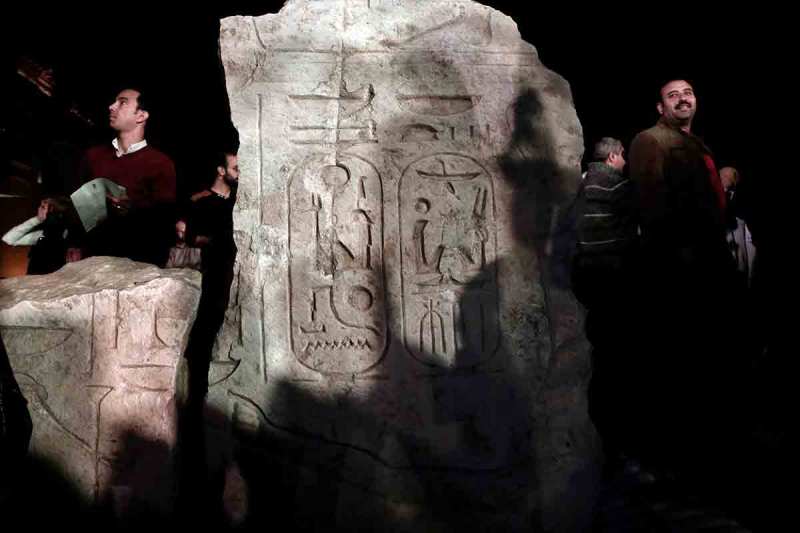
Initially, the statue was thought to be of Ramses II, since archaeologists made the discovery near the ruins of Ramses II’s temple, which was located in the ancient city of Heliopolis. Additionally, the dig also uncovered a three-foot-tall limestone bust of Pharaoh Seti II, Ramses II’s son.
But after further investigation, one of Psamtek I’s five names was found inscribed on the larger statue, according to Euronews.
Take a look at more astonishing images from the dig site below.
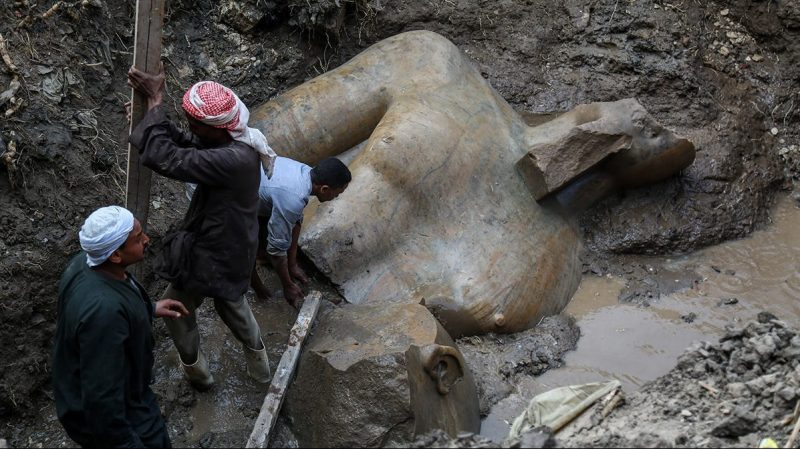
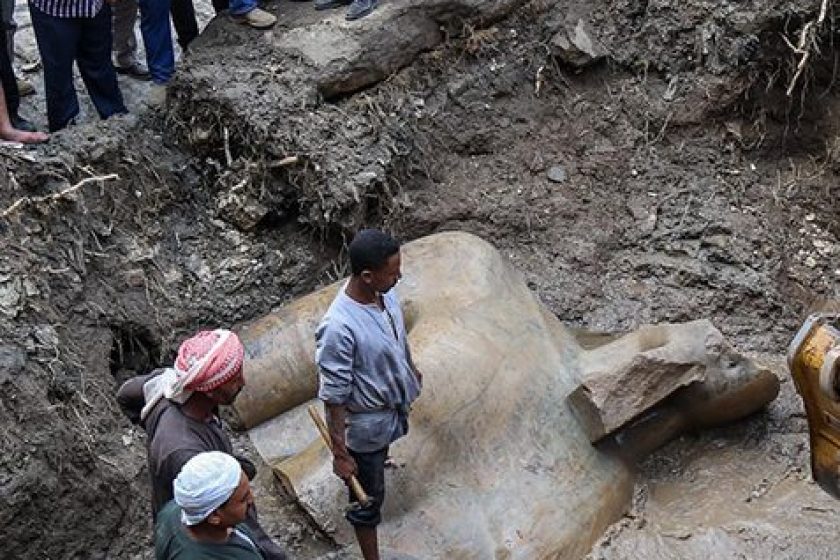
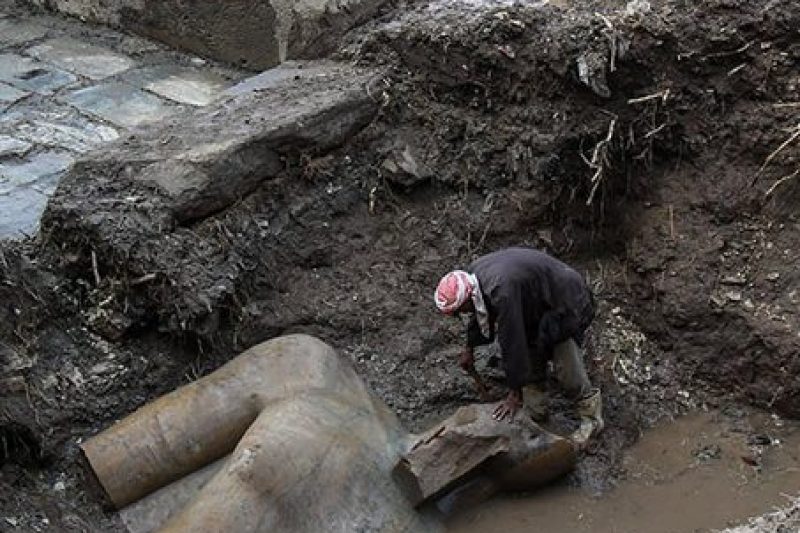
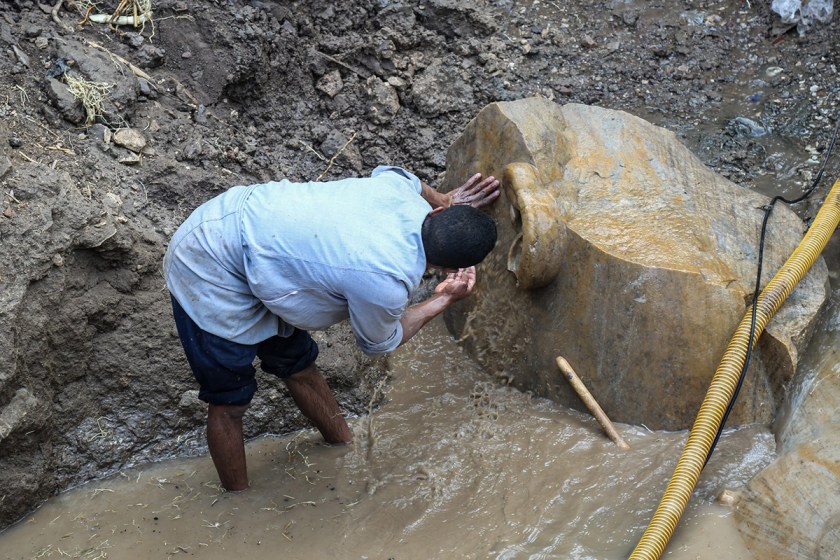
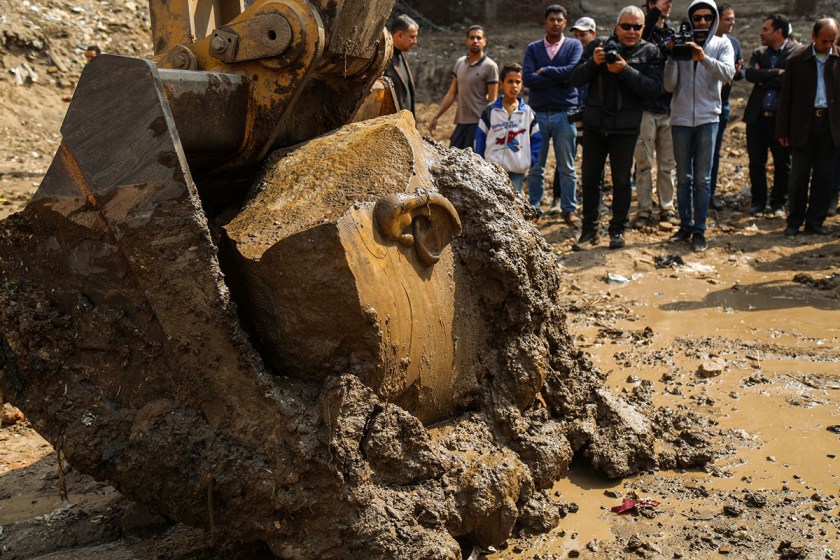

Below, watch footage of the excavation courtesy of Euronews.
—RealClearLife
This article was featured in the InsideHook newsletter. Sign up now.
![CORRECTION - A general view shows the statue believed to belong to King Psammetich I (Psamtik I), outside the Egyptian museum in Cairo on March 16, 2017, following its discovery by a team of German-Egyptian archeologists in Cairo's Mattarya district. / AFP PHOTO / KHALED DESOUKI / The erroneous mention[s] appearing in the metadata of this photo by KHALED DESOUKI has been modified in AFP systems in the following manner: [statue believed to belong to King Psammetich I (Psamtik I)] instead of [statue of King Psamtek l]. Please immediately remove the erroneous mention[s] from all your online services and delete it (them) from your servers. If you have been authorized by AFP to distribute it (them) to third parties, please ensure that the same actions are carried out by them. Failure to promptly comply with these instructions will entail liability on your part for any continued or post notification usage. Therefore we thank you very much for all your attention and prompt action. We are sorry for the inconvenience this notification may cause and remain at your disposal for any further information you may require. (Photo credit should read KHALED DESOUKI/AFP/Getty Images)](https://www.insidehook.com/wp-content/uploads/2017/03/King-Psamtek-l-0317-e1489759841186-1.jpg?fit=1182%2C666)























